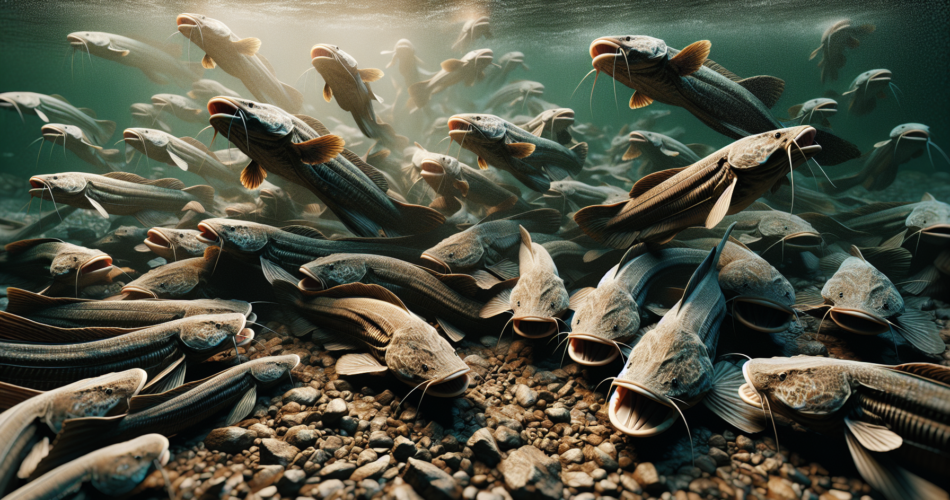Lungfish are among the most extraordinary creatures on Earth, possessing a remarkable ability to survive in environments that would be lethal to most aquatic organisms. These ancient fish have garnered attention not only for their primitive lineage, dating back over 400 million years, but also for their incredible adaptations that allow them to endure prolonged periods out of water. This article delves into the unique adaptations of lungfish that facilitate terrestrial survival, as well as the mechanisms that enable them to thrive during extended droughts.
The Unique Adaptations of Lungfish for Terrestrial Survival
Lungfish possess a fascinating array of anatomical features that contribute to their survival in oxygen-poor or dried-up environments. One of their most notable adaptations is the development of lungs that allow them to extract oxygen from air, a feature that distinguishes them from most other fish. While they do possess gills for aquatic respiration, lungfish can switch to using their lungs when water levels drop or when they find themselves in stagnant, oxygen-depleted waters. This dual respiratory system provides them with the flexibility to inhabit diverse environments.
In addition to their respiratory adaptations, lungfish have developed a unique skin structure that plays a critical role in their survival on land. Their skin is covered with a specialized mucus that helps prevent desiccation, effectively slowing down water loss during dry periods. This adaptation is crucial, as it enables lungfish to remain moist and viable while waiting for more favorable conditions. Furthermore, when lungfish enter a state of dormancy, they secrete a cocoon made from mucus and surrounding substrate, allowing them to survive extreme dehydration without succumbing to the elements.
Another remarkable adaptation of lungfish is their ability to enter a state of torpor, which greatly reduces their metabolic rate during periods of drought. This physiological response allows lungfish to conserve energy and maintain essential bodily functions with minimal resource consumption. By lowering their metabolic activity, lungfish can survive on stored energy reserves for months, making them resilient to prolonged periods without food or water. These adaptations collectively highlight the lungfish’s evolutionary ingenuity in coping with challenging environmental conditions.
How Lungfish Thrive During Extended Periods Without Water
Lungfish are capable of surviving in a wide range of habitats, including freshwater lakes, rivers, and swamps. When water levels recede, lungfish can burrow into the mud at the bottom of these bodies of water, where they create a burrow to shield themselves from the harsh external environment. This behavior not only offers protection but also helps them stay close to moisture, which is vital for their continued survival. The ability to dig into the substrate further enhances their chances of enduring extended droughts.
During periods of dormancy, lungfish enter a state termed “aestivation,” where they significantly slow their physiological processes. This state is akin to hibernation, allowing lungfish to drastically reduce their energy requirements. Notably, lungfish can endure several months to several years in this dormant state, depending on environmental conditions. Their ability to suspend metabolic processes during aestivation is a critical adaptation that ensures their survival and enables them to resume normal activities once the rains return, replenishing their aquatic habitat.
Interestingly, lungfish can also absorb moisture from the surrounding environment while in this dormant state. The combination of their skin’s mucus coating and their ability to extract moisture allows them to remain hydrated even when submerged in a dry substrate. Once conditions improve and water levels rise, lungfish will emerge from their cocoons, ready to resume life in a more favorable aquatic ecosystem. This unique survival strategy exemplifies the lungfish’s ability to adapt and thrive in conditions that would be challenging, if not impossible, for other species.
Lungfish are a testament to the resilience of life and the remarkable adaptations that can evolve in response to environmental pressures. Their ability to switch between aquatic and terrestrial life, combined with their physiological strategies for surviving extended periods without water, underscores the complexities of evolutionary biology. As we continue to explore and uncover the adaptations of such ancient species, we gain invaluable insights into the processes that shape life on our planet and the potential for survival in an ever-changing world. Understanding lungfish not only enhances our appreciation for biodiversity but also raises awareness of the critical importance of habitat conservation in ensuring the survival of such magnificent organisms.

